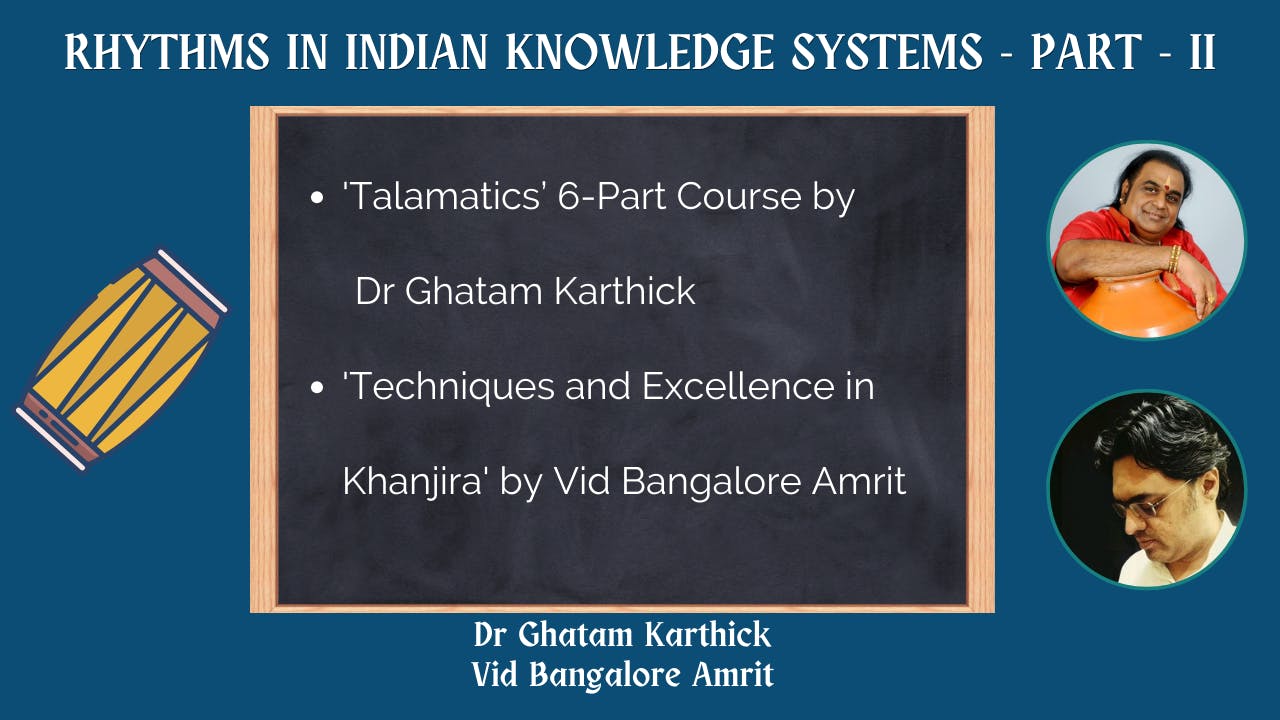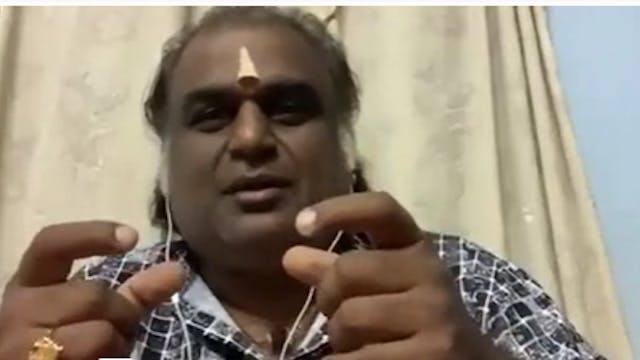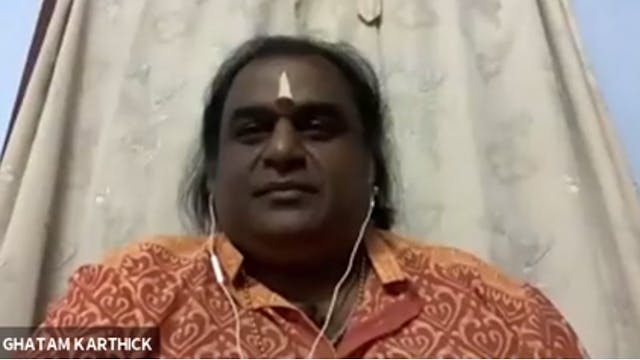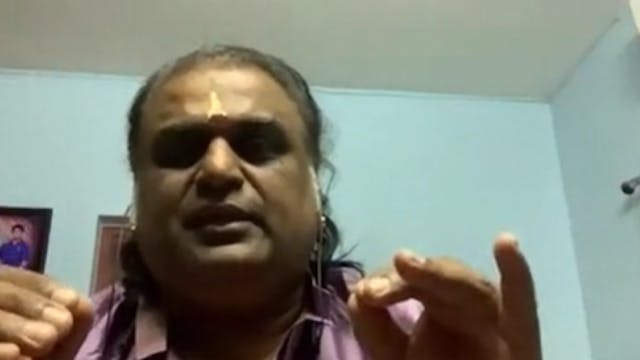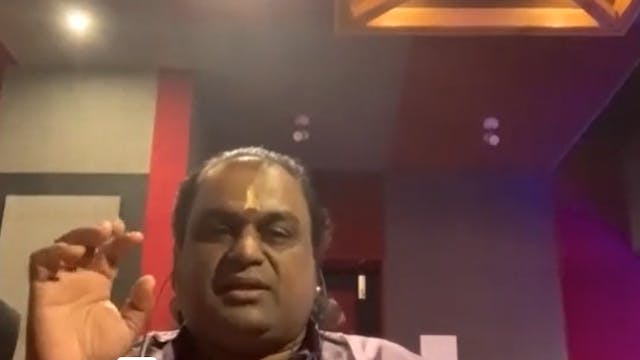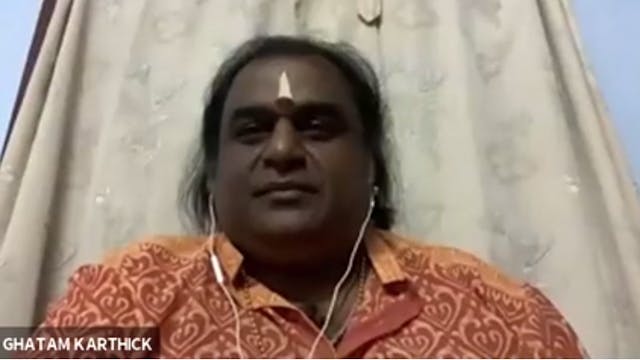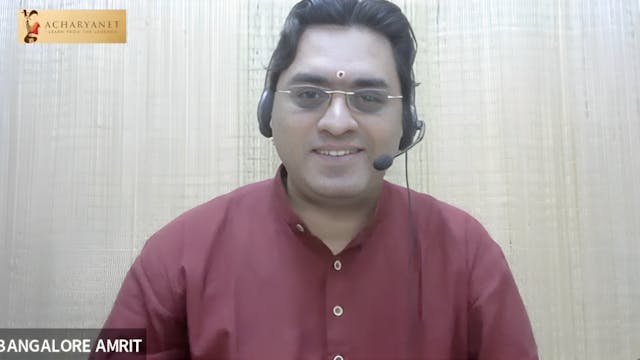RHYTHMS IN INDIAN KNOWLEDGE SYSTEMS - PART 2
Rhythms play a significant role in various Indian knowledge systems, encompassing diverse fields such as music, dance, poetry, literature, spirituality, and even science. Indian classical music and dance traditions, such as Carnatic music, Hindustani music, Bharatanatyam, Kathak, and Odissi, are deeply rooted in rhythmic structures. Rhythms are expressed through tala (rhythmic cycles) in music and through nritta (pure dance movements) in dance, with intricate patterns of beats and accents.
In Indian spiritual and philosophical traditions, rhythms are symbolic of cosmic order, harmony, and cyclical time. Practices such as chanting of mantras, recitation of prayers (stotras), and rhythmic breathing exercises (pranayama) are integral to spiritual disciplines and meditation techniques.
This course includes the Talamatics 6-Parts course taught by Dr Ghatam Karthick on the intricacies of Tala and Laya and introduction to playing techniques in Khanjira by Bangalore Shri Amrit.
The Talamatics course contains the following topics:
LEVEL 1
Enjoying Rhythm & Understanding the Concept of Carnatic Percussion
Basic Concept of Tala
The approach towards the Rhythmic System
Concept of Rhythm in a Concert Format
Progressions
Basic Syllables
LEVEL 2
Aksharas
Matras
Angas – Laghu, Drutham, Anudrutham etc.
Konnakkol
Syncopation
Grooves & Karvais
Konnakol Easy Exercises
LEVEL 3,4,5
Refreshing the Basic Concepts of Tala & Laya
Aksharas - Matras - Karvais
Internalizing Exercises
Gathi - Yathi
Kala Pramanams
Q&A session
LEVEL 6
Math of Music
Sarvalaghu
Ferns - Mohra - Korvai
Theermaanams
Phrases - Patterns - Progressions
Framing Porutthams
Koraippu
Mohra - Korvai
Metric Modulations
Fractional Talas
Q&A session
For Indian Residents: To pay with Netbanking, UPI, GPay and other payment options click
here.
-
Talamatics - Part 1 - Dr Ghatam S Karthick
Dr Ghatam Karthick teaches concepts of rhythm and tala in this masterclass session.
-
Talamatics - Part 2 - Dr Ghatam S Karthick
Dr Ghatam S Karthick teaches concepts of rhythm and tala in this masterclass session.
-
Talamatics - Part 3 - Dr Ghatam S Karthick
Dr Ghatam Karthick teaches concepts of rhythm and tala in this masterclass session.
-
Talamatics - Part 5 - Dr Ghatam S Karthick
Dr Ghatam Karthick teaches concepts of rhythm and Tala in this masterclass session.
-
Talamatics - Part 6 - Dr Ghatam Karthick
This is a session conducted over zoom for the benefit of students worldover, by Dr Ghatam S Karthick. This is a masterclass, Talamatics, where the maestro takes us through various concepts of rhythm and tala.
-
TECHNIQUES AND EXCELLENCE: Shri Bangalore Amrit
Shri Bangalore Amrit talks about techniques and excellence in the Khanjira in this online lecture demonstration for the Acharyanet Summer Camp 2022.
To access hundreds of lessons in the premium subscription package, become a m...

